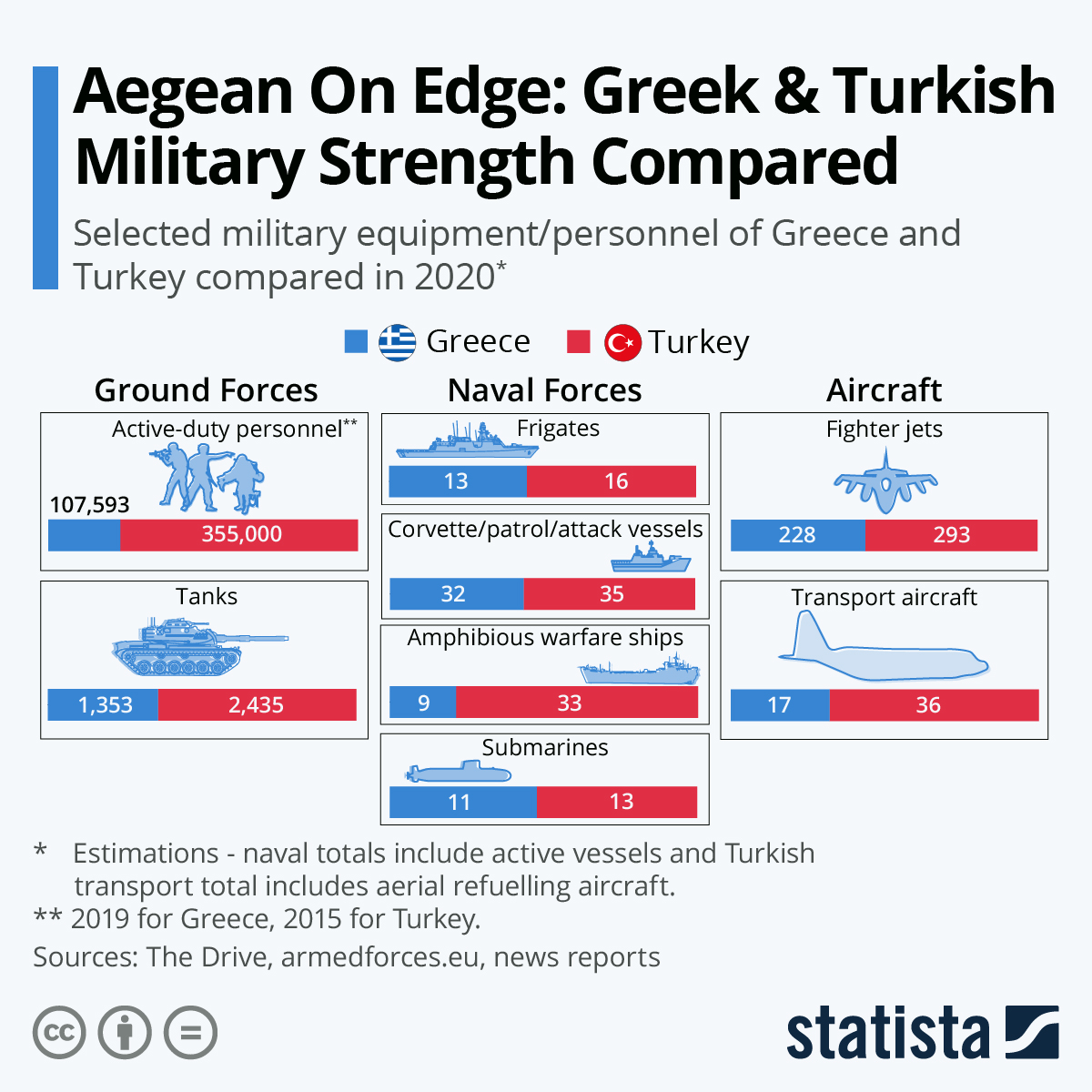Posturing and aggressive non-lethal military encounters are nothing new for the two NATO members, though recent incidents and rhetoric has led to mounting concern in the alliance as well as the European Union. Ankara has just announced that the Oruç Reis will have its voyage extended by 15 days with operations set to be conducted off Kastellorizo and the Greek island of Rhodos, along with its naval escort, before it returns to port. That is likely to lead to even greater tensions with Athens.
Military encounters between both countries have turned violent in the past, notably in 1996 when a Greek Mirage 2000 fighter jet shot down a Turkish F-16, resulting in the death of one of its crew members. Another serious incident occurred in 2006 when Greek and Turkish F-16s collided with the Turkish pilot surviving and his Greek counterpart losing his life.
As tensions grow, the following infographic compares the military strength of both countries using several sources including an interesting overview compiled by The Drive. Turkey is likely to be afforded an advantage in any clash due to its recent experience in the Syria conflict, though it may also be weakened by the 2016 coup attempt which saw it lose a significant number of experienced officers, particularly from its air force.

No comments:
Post a Comment